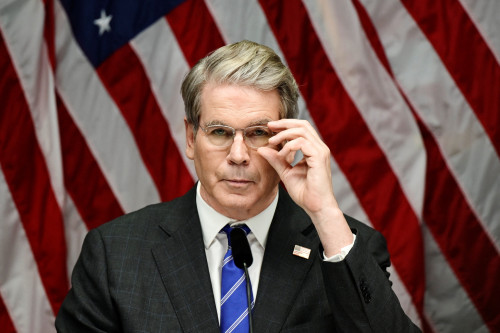By Gabriella Borter
WASHINGTON (Reuters) – In 1998, the year a voter-approved measure barring the use of race-conscious admissions policies for public colleges and universities in California took effect, the percentage of Black, Hispanic and Native American students admitted at two of the state’s elite public schools plummeted by more than 50%.
Those figures for UCLA and the University of California, Berkeley, offer a cautionary tale for administrators at schools around the United States after the Supreme Court on Thursday struck down race-conscious admissions policies.
The court’s decision in cases involving Harvard University and the University of North Carolina will bring new urgency to efforts by schools to maintain or increase racial and ethnic diversity in their student populations, according to interviews with senior administrators at a dozen colleges and universities in the weeks ahead of the ruling.
“We cannot afford as a nation to regress on our goals to create an educated and equitable society,” said Seth Allen, head of admissions at Pomona College in California. “So it’s incumbent on higher education to figure out how to work collectively together to ensure that we’re not furthering the enrollment gap among different groups of students.”
Many selective U.S. colleges and universities for decades have used some form of affirmative action to boost enrollment of minority students, seeing value in having a diverse student population not only to offer educational opportunity but to bring a range of perspectives onto campuses.
Affirmative action refers to policies that favor people belonging to certain groups considered disadvantaged or subject to discrimination, in areas such as hiring and student admissions.
A March 2023 study found if the U.S. Supreme Court banned the consideration of race in admissions, enrollment of minority groups at selective colleges will likely stall or decline – even if the schools give more weight to factors such as class.
So schools have been exploring numerous options on how to diversify the student body. Even before the ruling, administrators said they were drafting strategies to expand their recruitment of diverse applicants, remove application barriers and increase the rate of minority students who accept their admissions offers.
An official at Rice University in Houston said the school will lean on student essay responses to ensure it admits students from diverse backgrounds.
Conservative Chief Justice John Roberts, who authored Thursday’s ruling, said universities may still consider student writings in personal essays about “how race affected his or her life, be it through discrimination, inspiration, or otherwise.”
The president of Skidmore College in New York said connecting with high school counselors will become “more important than ever” to broaden the school’s applicant pool.
Many schools said they already have waived fees, made standardized testing optional and are looking to improve financial aid offers – steps that could help boost minority enrollment.
All of the administrators said their plans could change to comply with the Supreme Court’s decision in the Harvard and UNC cases. Some acknowledged that whatever steps schools take to circumvent a ban on race-conscious admissions policies might face legal challenges of their own.
“We’re likely to see a whole new generation of lawsuits arise from the new admission standards that will be adopted by colleges and universities,” said Danielle Holley, current dean of Howard University School of Law in Washington and incoming president of Mount Holyoke College in Massachusetts.
Lawsuits backed by an anti-affirmative action conservative activist accused Harvard and UNC of unlawful discrimination in student admissions either by violating the U.S. Constitution’s promise of equal protection under the law or a federal law barring discrimination based on race and other factors.
UNC was accused of discriminating against white and Asian American applicants. Harvard was accused of bias against Asian American applicants. The schools denied these allegations.
GOING LOCAL
Many of the school administrators said they plan to focus resources on recruitment.
Justice Sonia Sotomayor wrote in a dissenting opinion on Thursday that the majority opinion left intact holistic college admissions and recruitment efforts that sought to enroll diverse student bodies without using racial classifications.
Admissions officers said they were broadening their outreach to high schools and community-based organizations in neighborhoods with lower incomes and educational attainment – places often populated by racial minorities.
Yvonne Berumen, vice president of admissions at Pitzer College in California, said her team might run essay workshops at high schools in those targeted zip codes – postal regions – in hopes of generating applications.
Chris George, dean of admissions at St. Olaf College in Minnesota, said high school data from national organizations like the College Board, which offers information on neighborhood income and housing stability, will help guide which high schools the college sends representatives to visit and the recruitment events they attend.
Community-based organizations that identify local students who show academic promise and help them apply to college will be crucial partners for identifying and recruiting potential applicants from diverse backgrounds, the administrators said.
“They become extensions of our recruiting and admissions team in many ways, and we’re seeing each year a bigger and bigger percentage of our students come from those community-based organizations,” said Kent Devereaux, president of Goucher College in Maryland.
Administrators at schools located in or near major cities, including Pomona College near Los Angeles and Sarah Lawrence College in New York, said they would hope to draw more students from racially diverse local high schools and take more transfer students from local community colleges.
(Reporting by Gabriella Borter; Additional reporting by Donna Bryson; Editing by Will Dunham, Colleen Jenkins and Aurora Ellis)





